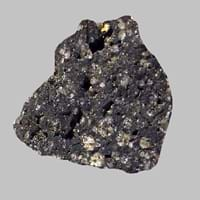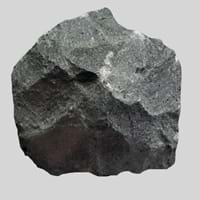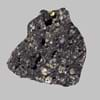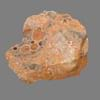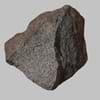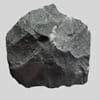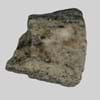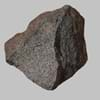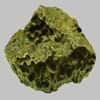Definition
Borolanite is a variety of Nepheline Syenite and belongs to igneous rocks and contains nepheline-alkali feldspar pseudomorphs which occur as conspicuous white spots in the dark rock matrix
Rhomb-porphyry is a porphyritic igneous rock with abundant wedge or lens shaped anorthoclase or feldspar phenocrysts
Discoverer
Unknown
Unknown
Etymology
From Alkalic Igneous complex near Loch Borralan in northwest Scotland
From Latin term that means purple
Class
Igneous Rocks
Igneous Rocks
Sub-Class
Durable Rock, Medium Hardness Rock
Durable Rock, Medium Hardness Rock
Other Categories
Fine Grained Rock, Opaque Rock
Fine Grained Rock, Opaque Rock
Texture
Granular
Aphanitic to Porphyritic
Color
Brown, Buff, Cream, Green, Grey, Pink, White
Black, Brown, Colourless, Green, Grey, Pink, White
Durability
Durable
Durable
Appearance
Banded and Foilated
Rough
Interior Uses
Countertops, Decorative Aggregates, Flooring, Homes, Interior Decoration
Decorative Aggregates, Homes, Interior Decoration
Exterior Uses
As Building Stone, As Facing Stone, Paving Stone, Garden Decoration, Office Buildings
As Building Stone, As Facing Stone, Paving Stone, Garden Decoration, Office Buildings
Other Architectural Uses
Curbing
Curbing
Construction Industry
As Dimension Stone, Cement Manufacture, Construction Aggregate, for Road Aggregate, Landscaping, Making natural cement, Manufacture of Magnesium and Dolomite Refractories, Production of Glass and Ceramics
As a Flux in the Production of Steel and Pig Iron, As a Sintering Agent in Steel Industry to process Iron Ore, As Dimension Stone, Cement Manufacture, for Road Aggregate, Making natural cement, Manufacture of Magnesium and Dolomite Refractories
Medical Industry
Not Yet Used
Not Yet Used
Antiquity Uses
Artifacts
Artifacts, Monuments, Sculpture, Small Figurines
Commercial Uses
Cemetery Markers
An Oil and Gas Reservoir, As a Feed Additive for Livestock, Metallurgical Flux, Soil Conditioner, Source of Magnesia (MgO)
Types
Not Available
Not Available
Features
Application of acids on the surface causes cloudy frosting, Available in Lots of Colors and Patterns, Dissolves in hydrochloric acid, Is one of the oldest rock
Host Rock for Lead
Archaeological Significance
Famous Monuments
Data Not Available
Data Not Available
Famous Sculptures
Data Not Available
Data Not Available
Formation
Borolanites are formed due to alkaline igneous activities and are generally formed in thick continental crustal areas or in Cordilleran subduction zones.
Rhomb-porphyry is a fine-grained, hard rock which is a type of metasomatite, essentially altered basalt. It forms with or without crystallization, either below the surface as intrusive rocks or on the surface as extrusive rocks.
Mineral Content
Albite, Amphibole, Biotite, Cancrinite, Feldspar, Hornblende, Plagioclase, Pyroxene, Sodalite
Alkali feldspar, Biotite, Plagioclase, Pyroxene
Compound Content
Aluminium Oxide, CaO, Iron(III) Oxide, FeO, Potassium Oxide, MgO, MnO, Sodium Oxide, Phosphorus Pentoxide, Silicon Dioxide, Titanium Dioxide
CaO, Cl, MgO
Types of Metamorphism
Regional Metamorphism
Impact Metamorphism
Types of Weathering
Chemical Weathering, Mechanical Weathering
Biological Weathering, Chemical Weathering, Mechanical Weathering
Types of Erosion
Wind Erosion
Chemical Erosion, Coastal Erosion, Glacier Erosion, Water Erosion
Grain Size
Fine Grained
Fine Grained
Fracture
Conchoidal to Uneven
Conchoidal
Porosity
Less Porous
Very Less Porous
Luster
Greasy to Dull
Subvitreous to Dull
Toughness
Not Available
2.7
Specific Gravity
2.6
2.86
Transparency
Translucent to Opaque
Translucent
Density
2.6 g/cm3
2.8-2.9 g/cm3
Specific Heat Capacity
Not Available
Resistance
Heat Resistant, Impact Resistant, Wear Resistant
Heat Resistant, Pressure Resistant
Deposits in Eastern Continents
Asia
Indonesia, Iran, Russia, Saudi Arabia, Sri Lanka, Taiwan, Thailand, Turkey, Turkmenistan, Vietnam
Not Yet Found
Africa
Angola, Egypt, Madagascar, Namibia, Nigeria, South Africa
Not Yet Found
Europe
Andorra, Finland, France, Great Britain, Italy, Norway, Portugal, Spain, Sweden
Bulgaria
Others
Greenland
Not Yet Found
Deposits in Western Continents
North America
Canada, USA
USA
South America
Brazil, Chile, Colombia, Uruguay, Venezuela
Not Yet Found
Deposits in Oceania Continent
Australia
New Zealand, Queensland, South Australia, Tasmania, Western Australia
Not Yet Found
All about Borolanite and Rhomb Porphyry Properties
Know all about Borolanite and Rhomb Porphyry properties here. All properties of rocks are important as they define the type of rock and its application. Borolanite and Rhomb Porphyry belong to Igneous Rocks.Texture of Borolanite is Granular whereas that of Rhomb Porphyry is Aphanitic to Porphyritic. Borolanite appears Banded and Foilated and Rhomb Porphyry appears Rough. The luster of Borolanite is greasy to dull while that of Rhomb Porphyry is subvitreous to dull. Borolanite is available in brown, buff, cream, green, grey, pink, white colors whereas Rhomb Porphyry is available in black, brown, colourless, green, grey, pink, white colors. The commercial uses of Borolanite are cemetery markers and that of Rhomb Porphyry are an oil and gas reservoir, as a feed additive for livestock, metallurgical flux, soil conditioner, source of magnesia (mgo).
